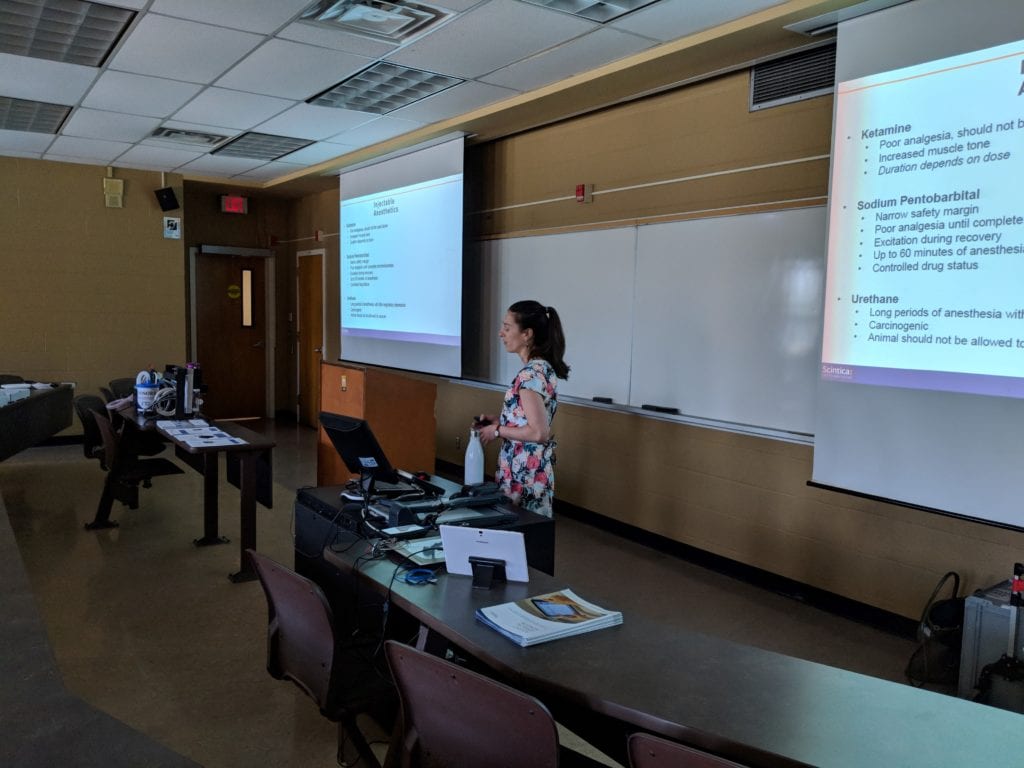Let’s talk lab safety
Anesthesia is essential in small animal research. Many different types of anesthetics are available, and understanding the associated benefits and risks helps to ensure animal and user safety.
Certain procedures may necessitate injectable anesthesia, however, there are multiple advantages to using inhalants whenever possible. With injectables, difficulty choosing an initial dose, risk of overdose, prolonged recovery, lack of depth modulation and the possibility of a misplaced injection are risks to animal safety. Inhalants such as isoflurane mitigate many of these risks, as they are given in standard ranges, allow for rapid removal and depth modulation, and require a significantly shorter recovery time.
Although inhalant anesthetics offer many advantages for animal welfare, user safety is often overlooked. Short term human exposure can result in eye irritation, headache, skin irritation, cough, dizziness and other side effects. With no current occupational exposure limits, it can be difficult to ensure safety. UNO BV anesthesia systems offer active gas scavenging from the nose cone and induction box in a closed system to ensure the user is not exposed to anesthetic gas.
As part of our involvement with the Canadian Association for Laboratory Animal Science (CALAS/ACSAL), we have hosted Lunch and Learn events at the University of Western Ontario and the University of Windsor. These events were a great opportunity to engage with other CALAS members and learn more about their research, as well as discuss some of the features and benefits of UNO BV anesthesia systems and the Indus Rodent Surgical Monitor. Contact us if you would like to arrange a similar event for your institution!
